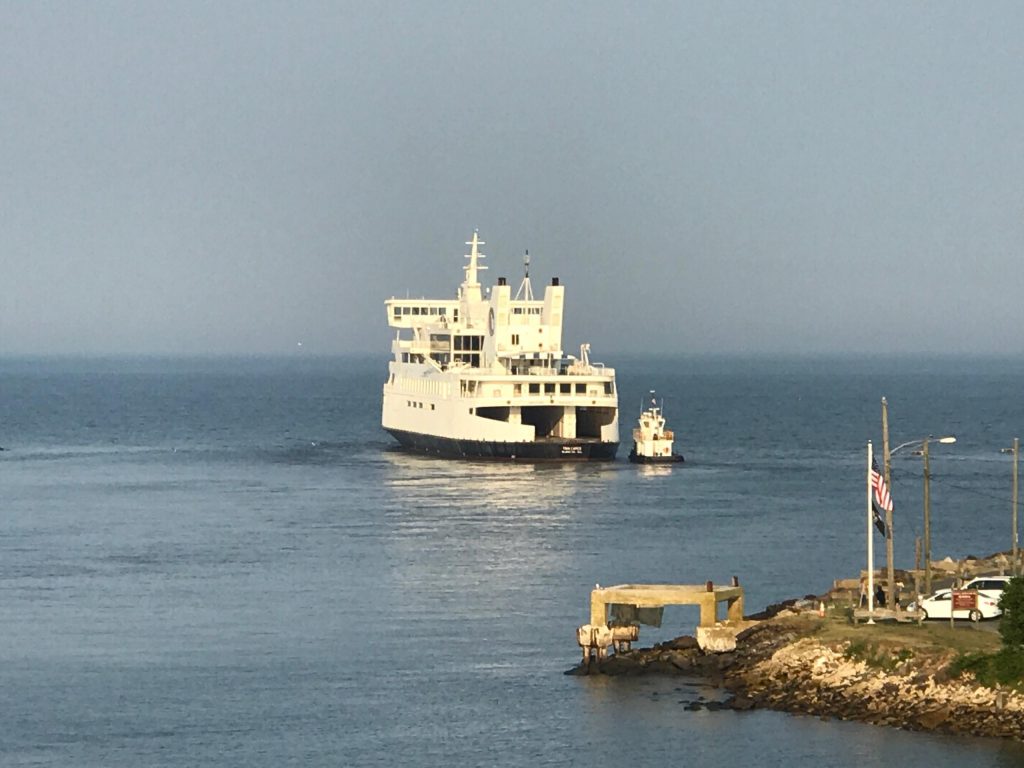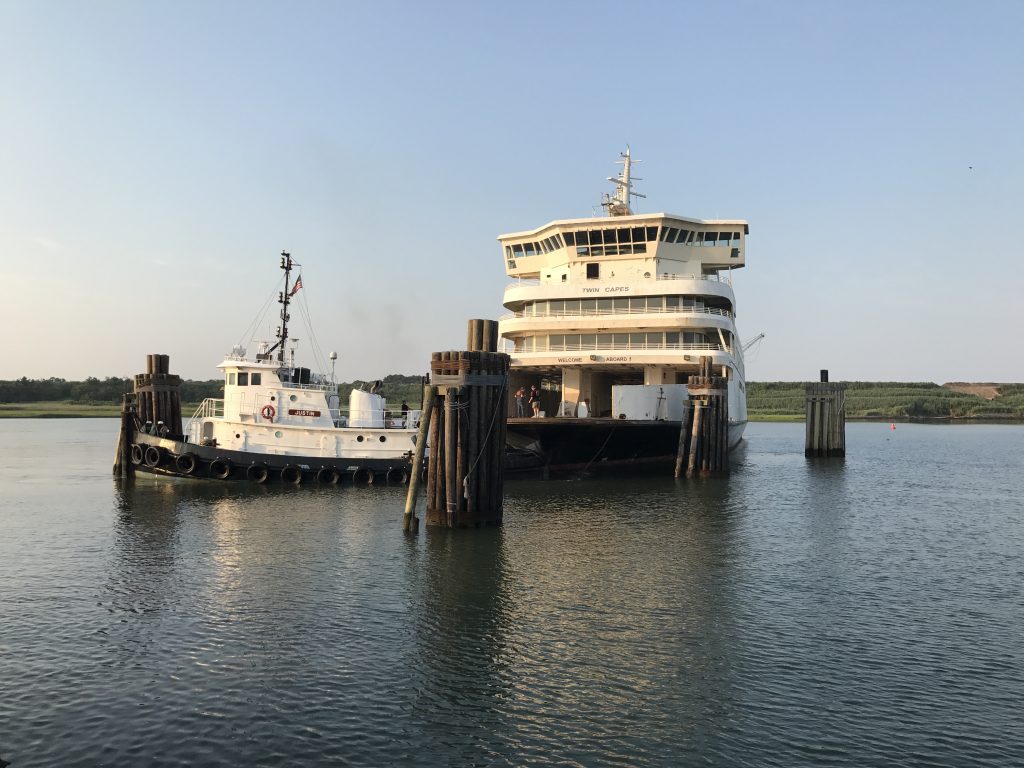
Cape May, NJ – Delaware River and Bay Authority (DRBA) officials announced that the ferry vessel, MV Twin Capes, will be sold to Delaware’s Department of Natural Resources and Environmental Control (DNREC), and converted into an artificial reef off the state’s Atlantic Coast that will provide marine habitat and recreational opportunities for boaters, anglers and divers. DNREC’s contractor, Coleen Marine of Virginia Beach, Va., paid the DRBA $200,000 last week to take possession of the MV Twin Capes and start preparations for DNREC’s projected sinking of the ferry in 2018 onto the Del-Jersey-Land artificial reef 26 miles off the Delaware and New Jersey coast.
For more than five years, the DRBA actively sought a buyer for the MV Twin Capes before the ferry’s future was decided on as an artificial reef. “We’re pleased to be able to partner with DNREC on this worthwhile environmental project,” said Heath Gehrke, Director of Ferry Operations. “During the sale process, it was apparent that the market was thin for such a specialized vessel. For us, it made sense to partner with DNREC on this artificial reef project to benefit the divers and sport fishermen of Delaware, New Jersey, and Maryland.”
DNREC Secretary Shawn M. Garvin said the Twin Capes would be reefed on the Del-Jersey-Land offshore reef site so that numerous fish species “can take advantage of the rich and spacious habitat it will provide. The Twin Capes is the one of the finest reefing candidates DNREC has ever seen, and as an artificial reef, it will be unparalleled as fish habitat and a spectacular dive for exploration. Adding the Twin Capes to Delaware’s artificial reef system is another investment in Delaware’s conservation economy by DNREC that also brings a trove of environmental benefits.”

The DRBA was able to sell the MV Twin Capes because current ridership levels at the Cape May-Lewes Ferry are more than adequately served with three vessels in the ferry fleet. The MV Twin Capes also was significantly more costly to operate compared to her sister ships, requiring 17 crew members to operate the vessel and using 126 gallons of fuel per hour (nearly 50 percent more crew and about 25 percent in additional fuel when compared to other DRBA ferries). Maintenance and operating cost savings related to the mothballing of the MV Twin Capes was approximately $1.1 million.
DRBA ferry operations director Gehrke also noted that approximately $230,000 worth of equipment, electronics, and engine components has been or will be removed from the vessel for resale. Included in the items destined for the warehouse are the vessel’s propellers, rescue boats, benches, chairs, bow thruster, light fixtures, generators, and pumps.
Declared surplus property in 2010 and mothballed in 2013, the MV Twin Capes last traveled the Delaware Bay route between Cape May, N.J. and Lewes, Del. during the summer of 2013. The vessel was moored at the Cape May Ferry terminal. The 320-foot long vessel had a carrying capacity of 895 people and 100 vehicles. The MV Twin Capes was one of the three original vessels, built at Todd Shipyards in Houston, Tex. in 1974. The Cape May-Lewes Ferry has three vessels remaining in its fleet: MV Delaware, MV New Jersey, and MV Cape Henlopen.
Source: DRBA
Image Credits: DBRA



